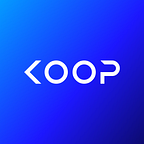The Dawn of Autonomy Commercialization
To date, 2021 has been filled with exciting news from the AV space. TuSimple went public, Plus and Argo AI are considering going public, Waymo and Cruise are pushing for commercial service permits in San Francisco, Embark launched EUI and PDP, and there is increasing public attention to autonomy thanks to materials like this and that. Likewise, off-road autonomy has shown progress, with companies showing good growth in autonomous agriculture, construction, drones, and robotics fields.
As the industry speeds up commercialization (right into the “hockey stick”), we believe that recent news is just the tip of the iceberg. As the technology becomes mature enough for the real-world deployment, it begs the question: What would the market structure look like for autonomy in an enormous market that would be north of $10T by some estimates? What will be the dominant relationship structure among OEMs, developers, fleets, mobility platforms, service providers, and end-users?
AV market structure is critically important for commercialization, but it is also very important for the insurance industry to understand liability breakdown between all parties involved. Liability is heavily influenced by software-defined operations with unprecedented vehicle utilization levels at scale. Sounds complicated? Because it is. The following might give some food for thought:
- We believe it is unlikely that a $10T industry will be dominated by 2–3 players at scale (be those developers or fleets). Autonomy will be a market rich with players and business models.
- It is also unlikely that the risk of the $10T industry will be concentrated solely at the developer level. Our vision is that each link in the AV value chain will bear some form of liability pertaining to autonomy. Such liability will most likely be legally and contractually determined.
- We also believe that the relationship between developers and fleets will be the most important because this is where the most complex technology deployment happens.
- Liability will eventually become a function of AV performance, safety, and operating domain.
While en route to the $10T autonomous vehicle future, developers and operators are already experiencing challenges navigating the insurance landscape today. Simply put, there is insufficient know-how in the industry to translate the technical assessment into an insurance rate. Recently, we have seen unsustainably high insurance pricing varying more than 100% carrier to carrier. That is not even considering the opportunity cost of the insurance purchasing process. Today’s approach doesn’t take advantage of the hardware-free data sharing between developers and the insurance industry, which could help price autonomy appropriately.
We believe the current lack of insurance capacity supply and specialty solutions is why the AV and robotics market is experiencing considerable difficulties with insurance. Unless there is a solution that focuses on that market, makes use of data sharing, and creates products specific to the nature of the risk, autonomy insurance will not happen. Meanwhile, we are already at the dawn of autonomy commercialization.
